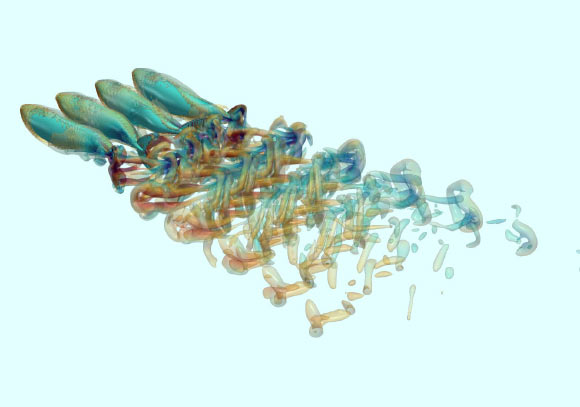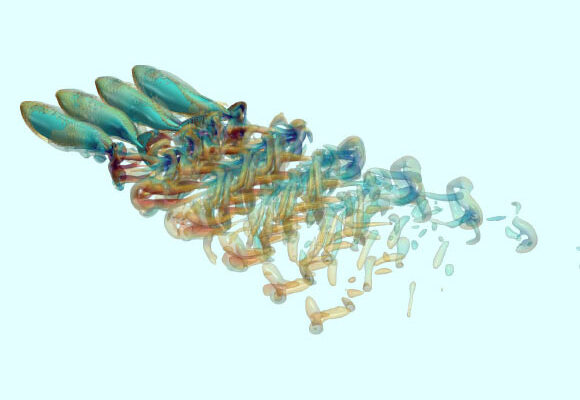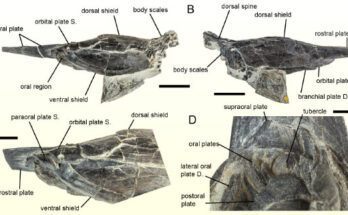A group of engineers at Johns Hopkins College has discovered {that a} college of fish shifting collectively in simply the fitting approach is stunningly efficient at noise discount: a faculty of seven fish feels like a single fish.

Computational fashions are used to look at the impact of education on circulation generated noise of fish swimming utilizing their caudal fins. Zhou et al. simulated the circulation in addition to the far-field hydrodynamic sound generated by the time-varying stress loading on these carangiform swimmers. Picture credit score: Zhou et al., doi: 10.1088/1748-3190/ad3a4e.
“It’s extensively identified that swimming in teams offers fish with added safety from predators, however we questioned whether or not it additionally contributes to lowering their noise,” mentioned Dr. Rajat Mittal, senior creator of the examine.
“Our outcomes recommend that the substantial lower of their acoustic signature when swimming in teams, in comparison with solo swimming, could certainly be one other issue driving the formation of fish colleges.”
Dr. Mittal and colleagues created a 3D mannequin primarily based on the widespread mackerel (Scomber scombrus) to simulate completely different numbers of fish swimming, altering up their formations, how shut they swam to 1 one other, and the levels to which their actions synched.
The mannequin, which applies to many fish species, simulates one to 9 mackerel being propelled ahead by their tail fins.
The authors discovered {that a} college of fish shifting collectively in simply the fitting approach was stunningly efficient at noise discount: a faculty of seven fish gave the impression of a single fish.
“A predator, reminiscent of a shark, could understand it as listening to a lone fish as an alternative of a gaggle. This might have vital implications for prey fish,” Dr. Mittal mentioned.
The one largest key to sound discount, the group discovered, was the synchronization of the varsity’s tail flapping — or truly the dearth thereof.
If fish moved in unison, flapping their tail fins on the identical time, the sound added up and there was no discount in whole sound.
But when they alternated tail flaps, the fish canceled out one another’s sound.
“Sound is a wave. Two waves can both add up if they’re precisely in section or they’ll cancel one another if they’re precisely out of section. That’s type of what’s taking place right here although we’re speaking about faint sounds that will barely be audible to a human,” Dr. Mittal mentioned.
“The tail fin actions that scale back sound additionally generate circulation interplay between the fish that permit the fish to swim quicker whereas utilizing much less vitality,” added Ji Zhou, first creator of the examine.
“We discover that discount in flow-generated noise doesn’t have to come back on the expense of efficiency.”
“We discovered circumstances the place vital reductions in noise are accompanied by noticeable will increase in per capita thrust, as a result of hydrodynamic interactions between the swimmers.”
The researchers had been surprized to search out that the sound discount advantages kick in as quickly as one swimming fish joins one other.
Noise discount grows as extra fish be a part of a faculty, however the group expects the advantages to cap off sooner or later.
“Merely being collectively and swimming in any method contributes to lowering the sound signature. No coordination between the fish is required,” Dr. Mittal mentioned.
The examine was printed April 3 within the jounral Bioinspiration & Biomimetics.
_____
Ji Zhou et al. Impact of education on circulation generated sounds from carangiform swimmers. Bioinspiration & Biomimetics, printed on-line April 3, 2024; doi: 10.1088/1748-3190/ad3a4e



